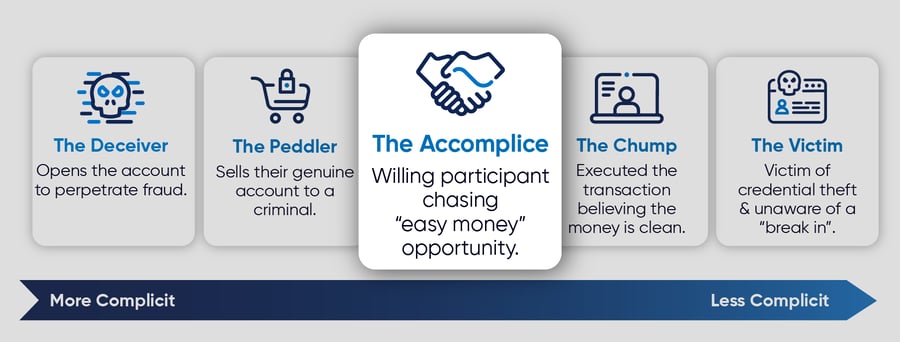Criminals and cybercriminals alike are constantly looking for the next get rich quick opportunity at the expense of others. Not only are we seeing an increase in schemes, scams, and attacks, but they are getting much more sophisticated. They continue to innovate and deploy a variety of different tactics to attempt to fly under the radar.
One strategy they deploy, similar to legitimate businesses, is making growth a top priority. Even criminals build illegal operations by building and growing a team. As an illegal operation tends to grow, so does the number of participants. This type of participation can be voluntary or involuntary and the teamwork could occur before, during, or after a crime has taken place. This makes it tricky for authorities to track down everyone involved in a crime and prosecutors to determine the accessories, accomplices, and levels of guilt.
One of the biggest industries to fall victim to partnered crime is the banking industry. According to infosecurity-magazine, there has been a massive spike in cyber related attacks on banks and financial institutions. Even stating that respondents of a recent report said that attackers have “dramatically increased” their understanding of policies and procedures to take advantage of blind spots.
One of the specific types of partnered crime that we see in the banking industry is money laundering. According to Interpol, 90% of money mule transactions are directly linked to cybercrime. Criminals either create accounts, buy accounts, or partner with genuine users to conduct mule account activities. This leads us to the next money mule persona we’re breaking down: the Accomplice.
The Accomplice, as the name would suggest, is a willing participant within a mule account/moneylaundering operation. The Accomplice could be a third-party participant looking for easy money, or a member of a larger criminal organization that’s following orders. Either way, the Accomplice can be held legally responsible for acting as a mule to launder money.

Now that you have been introduced to the Accomplice, let’s look at how this specific persona can be problematic for banks by causing financial and reputational damage as well as regulatory compliance concerns. Just because the Accomplice falls in the middle of the complicit scale doesn’t mean they are less of a risk to banks. For example, the Accomplice more than likely has a clean track record, isn’t a known criminal, and has no direct motive to the larger crime that is occurring. They often have genuine accounts with no historical behaviors that are indicative of criminal activity. The more Accomplices that make up a mule operation, the larger the investigation. This can lead to longer frozen accounts and a large consumption of operational resources.
To learn more about the scale and evolution of mule activity and how financial institutions are addressing the problem, check out our recent webinar, Stop Muling Around: Best Practices for Mule Account Detection, with Trace Fooshee, Strategic Advisor in Aite-Novarica’s Fraud & AML practice.
This is the third blog in a five-part series on mule personas. Check out the second blog in our series, The Mule Account Peddler: When Good Accounts Go Bad.



